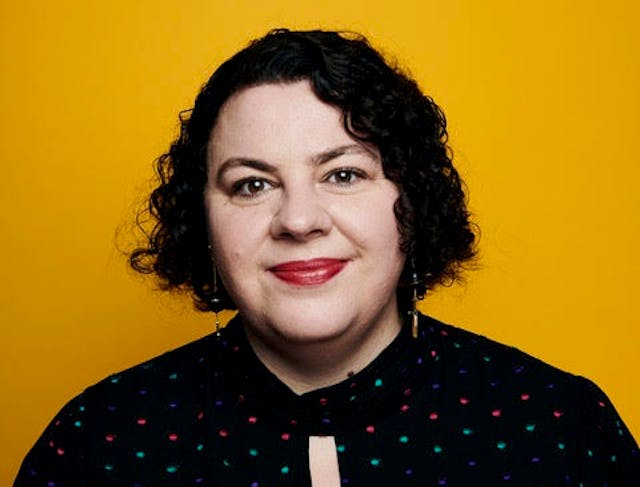Creatives tell us how to find the Goldilocks zone for emotional storytelling in ads
Not too sweet, not too salty. Effective emotional storytelling relies on getting it just right. We asked top creatives for the secret recipe.

A still from Uncommon’s Quaker Oats campaign / Quaker Oats
Charlotte Wells, the director behind sad-dad indie hit Aftersun, has also directed a sad-dad ad for Quaker Oats. The short film, released last week, was Uncommon Creative Studio’s first work in the US and featured a capsule story about fatherhood, feelings and inevitably, oatmeal.
Whether or not Wells’s work hits the mark is a matter of taste. One reporter at The Drum thought it was too subtle, while others thought it was laying on the feelings pretty thick.
Emotion is a classic tool in the palette of advertising creatives the world over. Like any tool, it can be used deftly or dully. The Drum wanted to gather some advice on how to deploy emotional storytelling at just the right degree. So, I asked a bunch of agency leaders and creatives: how do you solve a problem like... finding the Goldilocks zone for emotion in ads?
Hold back

Tamryn Kerr, co-founder and CCO Hijinks: “One of my favourite ads when I was growing up in South Africa was a VW spot called Memories. As a man looks back over his life, it hit the sweet spot for me with just the right amount of “awwww” moments and a real insight about how VW fits into people’s lives, not an invented construct. The brand could have taken the emotional pull further, but didn't - the right decision. If you take people too far down the emotional journey it can be hard to bring them back again, and no one wants to cry over porridge.“
Les Binet, group head of effectiveness, Adam&EveDDB: “Rational persuasion can be great for short-term selling. But if you want to build long-term profits, it’s better to seduce with emotions, feelings and associations. But that doesn’t mean you always have to make people cry or come out in goosebumps. It’s perfectly possible to succeed with a more subtle emotional palette. Evoking a wry smile can be enough. Indeed, intense emotion can be inappropriate. Remember when Subway tried to ‘Do a John Lewis’?
“Ultimately, you want ads that are interesting, enjoyable and relevant. There’s no emotional formula for that. It demands endless creativity.”
Advertisement
Paul Turner, creative director, Embrace: ”If Goldilocks was working in B2B marketing, she’d find the level of emotion in consumer ads too hot for her purposes. With multiple stakeholders to keep happy, strict regulations and a culture of compliance, she might be forgiven for thinking B2B should be served cold. But a tension has arisen in compliance culture – driven by digital transformation, social media, and the ‘fail fast’ mentality of tech start-ups – leading to a surge in B2B marketing creativity. Now there’s a bit more scope to draw on the big human issues in health, finances, sustainability and manufacturing, in a way that moves people across the board.”
Jef Loeb, creative director, Brainchild Creative: “In truth, it all comes down to believability: in premise, performance, and, critically, context. The icing on the cake is one that directors use to bring ‘a theater full of strangers to a common emotional conclusion’ – something unexpected that shows us something new and interesting about ourselves. The only way to know if we’ve hit the mark is the same technique chefs and vintners use to decide if they’ve got the right flavors: we taste as we go along. I’ve had actors work up to tears on set, video village following suit, only to realize it plays like dogshit in editorial. While Goldilocks might be a very nice little girl, her emotional sister is an entirely elusive bitch.”
Advertisement
Lay it on thick
Rowenna Prest, chief strategy officer, creative agency Joint: “In a world where most ads are ignored, is there such a thing as creating too much emotion? I don’t think so - it’s the holy grail of what we’re trying to achieve. It’s proven that emotion gives businesses a commercial edge - in both short-term sales and long-term growth. And it doesn’t just mean making ads that make people cry. The whole spectrum of emotions is valid, humor being especially powerful. But making people feel anything in an ad isn’t easy. It takes real consumer understanding and humility to appreciate the role a brand authentically plays in consumers’ lives. The risk comes when going nakedly for the tear ducts with no understanding and failing miserably.”
Rob Canales, chief strategy officer, The 3rd Eye: “Brands often feel the need to overexplain a position using voiceover and text to ensure the audience grasps what they are trying to trigger. Or they are so cerebral that the feeling is lost in the matrix of thought. The truth is – feelings don’t come with instruction manuals, they just appear. And the best brands understand that they aren’t talking “at” an audience, they’re starting a conversation. One framed around a feeling we all can share.
“As a dad building my own routines and personal moments with my son, the Quaker spot didn’t just inspire emotion, it transported me to a place of reflection. It creates a space where you can relate and make the moment your own. And even if the whole time I knew the dad wasn’t going to make it to the end of the spot, I still needed to see if they paid it off. I was invested in the moment because I live a version of it every day. So yes, these are good questions to pose as a writer. But I’d argue the real story isn’t the value of emotion, but rather, the value of allowing your brand to be that mirror on to the human condition. To say: “We see you because we are you.”
Suggested newsletters for you
Elliott Millard, chief strategy and planning officer, Wavemaker: “Emotion is powerful for creating connections and standing out. But it goes beyond the creative. It’s about knowing when media placement should match the content and when it should deliberately jar. Traditionally, uplifting or optimistic ads avoid serious or frivolous contexts, while those that pull on heartstrings aim for co-viewing for a shared melancholic moment. But playing around with this could be an effective way to grab disproportionate attention.
“The secret is to consider the bigger picture because ultimately, cultural context and a brand’s tone of voice will always be more important than simply the creative and where it’s placed.“
Olaf van Gerwen, founder and global creative director, Chuck Studios: “This lovely tale of a father/son bond is built around the food consumption moment: at the breakfast table. The product is at the heart of all the emotions. The ‘bowl bump’ ritual they created is also emotional. But it’s not all about complex emotions: the moment your tongue tastes ingredients, or your eyes see crunchy bacon or a steaming loaf of bread, that’s emotion too. And there’s tons of proof that emotional storytelling make ads memorable and effective.”
Make it universal
Rob Fletcher, executive creative director, Isobel: “Emotion in advertising is very much like stand-up comedy. Identify those things which unite us all as human. What it’s like to be human. You can’t cheat this.
Honestly, and I hate to be mean, but the Quaker ad isn’t based on a known truth. A shared emotion. A similar product years ago ran ‘Central Heating for Kids’ – this is a truth every parent can get hold of. A truth that conjures warmth, a sense of security that every parent can emotionally relate to. We need to look hard and discover a truth that actually exists within our product or category. This is not easy and we cannot invent a truth and dress it up to appear true. However awarded and applauded the director.”
Andy Berkenfield, chief executive officer and partner, Duncan Channon: “The answer to this question lies in the overused word “authenticity.” What makes emotion work in advertising is when it’s relatable. Whether emotion is present or not, or dialled up or down, is not a measure of effectiveness. Getting emotion right in advertising is about getting people right, it’s about connecting with them in ways that are true, and real. It is about the consumer thinking: ‘That is exactly how I feel.’
“What makes advertising feel exaggerated or over the top is not a function of how much or little emotion is added, it’s about the accuracy of understanding people’s feelings. This accuracy is what makes advertising work. Not how much of an ingredient called “emotion” was added to the recipe.”
Rik Moore, managing partner strategy, The Kite Factory: “Suzy Eddie Izzard has spoken about how, no matter the story, she must ground it in a reference point, allowing the audience to go on the journey with her. The same applies here: If you ground an ad in credibility, the audience has a reference point from which to go on that emotional journey with you. While the importance of emotion is massive, the Goldilocks zone for credibility is the more relevant question to ask yourself. Get that credible space for the brand to play in right, and you then have license to explore all manner of emotional approaches.”

